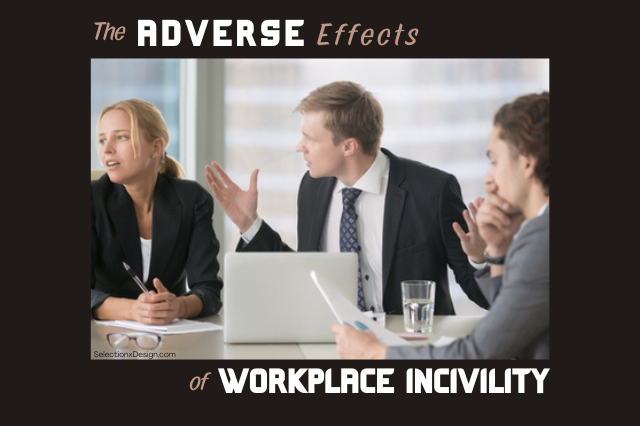By Dr Paolo Yaranon
In busy workplaces, camaraderie, dignity, and respect are work features every employee hopes to achieve and experience. In a survey conducted among twenty thousand employees worldwide, showing respect was critical for employees (Porath et al., 2015). The findings also suggested that courtesy bears positive organisational outcomes. For example, emplyees who are respected by their managers demonstrate high levels of engagement and commitment to their organisation.
More generally, research in the field of employee well-being provides evidence that civility and respect in the workplace have been found to positively contribute to the well-being and job performance of employees (Clarke & Mahadi, 2017a), affective commitment (Clarke & Mahadi, 2017b), increased collaboration (Porath et al., 2015), and eventually, organisational embeddedness (Ng, 2016). However, having a healthy working environment and achieving favourable work outcomes are contingent on the quality of interactions in the workplace and can be compromised through negative behaviours such as workplace mistreatment.
Mistreatment in the workplace comprises a spectrum of deviant behaviours that vary according to severity and intent, such as incivility. Furthermore, there appears to be a decline in civility as incivility moves closer to being the accepted norm in the workplace (Jensen et al., 2019).
In their seminal paper, Andersson and Pearson (1999) conceptualised workplace incivility as mild discourteous behaviours in which the desire to harm another person is unclear. Incivility differs from other constructs of workplace mistreatment because of its distinguishing features of unclear intent and low intensity, and anyone in the workplace can be uncivil. The intention to harm (through the eyes of the perpetrator and the target) is unclear and contingent on the receiver’s interpretation. Put differently, instigators of incivility can easily deny any intent (if it exists) to harm, using ignorance as an excuse (e.g., “I did not mean to be rude”) or blame the target for being oversensitive or their misinterpretation.
In addition to vague intent, incivility can originate from individuals across all workplace levels and occupations. Unlike other forms of mistreatment (e.g., bullying, harassment, and aggression), where the perpetrators are usually someone with power or authority, any member of the organisation, regardless of status (e.g., subordinate or manager), and people outside the organisation (e.g., customers) can initiate an uncivil act. As Cortina and Magley (2009) stated, such deviant acts are prevalent in the workplace. Furthermore, Han et al. (2021) argued that incivility’s inherent nature of mildness contributed to its prevalence.
In a recent meta-analytic study that examined the prevalence of various types of workplace mistreatment across 543 independent samples and with almost a million employees included in the analyses, Dhanani and colleagues (2021) showed that the average prevalence rate for workplace incivility was 75%. Certain factors contribute to the occurrence of incivility in the workplace. For instance, Pearson and colleagues (2005) identified organisational changes and pressures as one of the primary causes of increased levels of workplace incivility. Many organisational changes have occurred in modern working life, including new types of employment, uncertainty caused by downsizing and restructuring, and transitions in working arrangements. Other possible explanations include low job control (Jiménez et al., 2018) and high job demands (Aboodi & Allameh, 2019). Altogether, these studies explain the roles of organisational and job-level factors that contribute to an uncivil working environment.
There is indeed extensive evidence that workplace incivility, although characteristically mild, can have a host of adverse effects on well-being, such as lower levels of energy (Giumetti et al., 2013), reduced optimism (Bunk & Magley, 2013), increased negative emotions (e.g., Sakurai & Jex, 2012), stress (e.g., Cortina et al., 2001; Oyeleye et al., 2013) and emotional exhaustion (e.g., Sliter et al., 2010). Given the negative impact of these deviant behaviours on employee well-being, we can categorise workplace incivility as a job demand (Bakker et al., 2023; Rhee et al., 2017). Job demands are physical, social, or organisational features that require employees to expend physical or psychological effort (Demerouti et al., 2001). The constant exposure to this form of mistreatment can exhaust employees’ mental and physical resources (Karaeminogullari et al., 2018).
The current literature recognises the adverse effects of workplace incivility. However, scant attention has been paid to the simultaneous examination of the impact of experiencing incivility from organisational insiders versus outsiders on employee well-being. I addressed this gap in my PhD research and distinguished two categories of incivility sources in the workplace. Insider sources refer to colleagues, while outsider sources pertain to clients or customers. Interestingly, I found that insider sources of incivility have a more adverse impact on employee well-being than incivility from people outside the organisation. It shows that experiencing incivility from colleagues is a form of violation of trust and goes against the norms of mutual respect and professionalism in the workplace, highlighting the value employees place on the interpersonal relations with their colleagues.
Work is a social activity. Due to the increasing interdependence of tasks and employees in today’s competitive work environment, organisations depend on positive employee relations to increase effectiveness and productivity. We often hear the term respect begets respect in the workplace. However, despite the awareness raised in scholarly work, social issues like incivility remain prevalent and constitute a more significant proportion of work demands (Sonnentag & Frese, 2013). Therefore, organisational leaders are accountable for creating a sustainable workforce that protects employees from harmful work elements like workplace incivility (Pearson & Porath, 2005). It is crucial to find the necessary measures to curtail this form of deviant behaviour at work to protect employees from its undesirable effects and emphasise the significance of showing respect among colleagues. They can achieve this by developing or improving existing policies, guidelines, and measures for maintaining a professional working culture. Doing so will significantly impact the well-being of employees and the organisation.
References
Aboodi, H., & Mohsen Allameh, S. (2019). A theoretical model of antecedents of customer-directed incivility. Int. J. Business Excellence, 17(4), 516–543.
Andersson, L. M., & Pearson, C. M. (1999). Tit for tat? The spiraling effect of incivility in the workplace. Academy of Management Review, 24(3), 452–471. https://doi.org/10.5465/amr.1999.2202131
Bakker, A. B., Demerouti, E., & Sanz-Vergel, A. (2023). Job demands-resources theory: Ten years later. Annual Review of Organizational Psychology and Organizational Behavior, 10, 25–53. https://doi.org/10.1146/annurev-orgpsych-120920
Bunk, J. A., & Magley, V. J. (2013). The role of appraisals and emotions in understanding experiences of workplace incivility. Journal of Occupational Health Psychology, 18(1), 87–105. https://doi.org/10.1037/a0030987
Clarke, N., & Mahadi, N. (2017a). Mutual recognition respect between leaders and followers: Its relationship to follower job performance and well-being. Journal of Business Ethics, 141(1), 163–178. https://doi.org/10.1007/s10551-015-2724-z
Clarke, N., & Mahadi, N. (2017b). The significance of mutual recognition respect in mediating the relationships between trait emotional intelligence, affective commitment and job satisfaction. Personality and Individual Differences, 105, 129–134. https://doi.org/10.1016/j.paid.2016.09.028
Cortina, L. M., & Magley, V. J. (2009). Patterns and profiles of response to incivility in the workplace. Journal of Occupational Health Psychology, 14(3), 272–288. https://doi.org/10.1037/a0014934
Cortina, L. M., Magley, V. J., Williams, J. H., & Langhout, R. D. (2001). Incivility in the workplace: Incidence and impact. Journal of Occupational Health Psychology, 6(1), 64–80. https://doi.org/10.1037/1076-8998.6.1.64
Demerouti, E., Nachreiner, F., Bakker, A. B., & Schaufeli, W. B. (2001). The job demands-resources model of burnout. Journal of Applied Psychology, 86(3), 499–512. https://doi.org/10.1037/0021-9010.86.3.499
Dhanani, L. Y., LaPalme, M. L., & Joseph, D. L. (2021). How prevalent is workplace mistreatment? A meta-analytic investigation. Journal of Organizational Behavior, 42(8), 1082–1098. https://doi.org/10.1002/job.2534
Giumetti, G. W., Hatfield, A. L., Scisco, J. L., Schroeder, A. N., Muth, E. R., & Kowalski, R. M. (2013). What a rude e-mail! Examining the differential effects of incivility versus support on mood, energy, engagement, and performance in an online context. Journal of Occupational Health Psychology, 18(3), 297–309. https://doi.org/10.1037/a0032851
Han, S., Harold, C. M., Oh, I.-S., Kim, J. K., & Agolli, A. (2021). A meta-analysis integrating 20 years of workplace incivility research: Antecedents, consequences, and boundary conditions. Journal of Organizational Behavior, 43(3), 497–523. https://doi.org/10.1002/job.2568
Jensen, J. M., Cole, M. S., & Rubin, R. S. (2019). Predicting retail shrink from performance pressure, ethical leader behavior, and store-level incivility. Journal of Organizational Behavior, 40(6), 723–739. https://doi.org/10.1002/job.2366
Jiménez, P., Bregenzer, A., Leiter, M., & Magley, V. (2018). Psychometric properties of the German version of the workplace incivility scale and the instigated workplace incivility scale. Swiss Journal of Psychology, 77(4), 159–172. https://doi.org/10.1024/1421-0185/a000213
Karaeminogullari, A., Erdogan, B., & Bauer, T. N. (2018). Biting the hand that heals: Mistreatment by patients and the well-being of healthcare workers. Personnel Review, 47(2), 572–591. https://doi.org/10.1108/PR-03-2016-0054
Ng, T. W. H. (2016). Embedding employees early on: The importance of workplace respect. Personnel Psychology, 69(3), 599–633. https://doi.org/10.1111/peps.12117
Oyeleye, O., Hanson, P., O’Connor, N., & Dunn, D. (2013). Relationship of workplace incivility, stress, and burnout on nurses’ turnover intentions and psychological empowerment. Journal of Nursing Administration, 43(10), 536–542. https://doi.org/10.1097/NNA.0b013e3182a3e8c9
Pearson, C. M., Andersson, L. M., & Porath, C. L. (2005). Workplace incivility. In S. Fox & P. E. Spector (Eds.), Counterproductive work behavior: Investigations of actors and targets (pp. 177–200). American Psychological Association. https://doi.org/10.1037/10893-008
Pearson, C. M., & Porath, C. L. (2005). On the nature, consequences and remedies of workplace incivility: No time for “nice”? Think again. Academy of Management Executive, 19(1), 7–18.
Porath, C. L., Gerbasi, A., & Schorch, S. L. (2015). The effects of civility on advice, leadership, and performance. Journal of Applied Psychology, 100(5), 1527–1541. https://doi.org/10.1037/apl0000016
Rhee, S. Y., Hur, W. M., & Kim, M. (2017). The relationship of coworker incivility to job performance and the moderating role of self-efficacy and compassion at work: The job demands-resources (JD-R) approach. Journal of Business and Psychology, 32(6), 711–726. https://doi.org/10.1007/s10869-016-9469-2
Sakurai, K., & Jex, S. M. (2012). Coworker incivility and incivility targets’ work effort and counterproductive work behaviors: The moderating role of supervisor social support. Journal of Occupational Health Psychology, 17(2), 150–161. https://doi.org/10.1037/a0027350
Sliter, M., Jex, S., Wolford, K., & McInnerney, J. (2010). How rude! Emotional labor as a mediator between customer incivility and employee outcomes. Journal of Occupational Health Psychology, 15(4), 468–481. https://doi.org/10.1037/a0020723
Sonnentag, S., & Frese, M. (2013). Stress in organizations. John Wiley & Sons.
Dr Paolo Yaranon is an Assistant Professor in the Department of Work and Employment Studies at the Kemmy Business School, University of Limerick. He received both his MSc and PhD from the University of Limerick. He is a member of the British Psychological Society (BPS) Register of Qualifications in Test Use (RQTU), and the Kemmy Business School Equality & Diversity Committee.
His research lies within the field of counterproductive work behaviours, workplace mistreatment and its impact on employee well-being and organisational outcomes. He is specifically interested in workplace incivility – its antecedents, differential effects between sources, and its reciprocal nature. He is also looking at the buffering roles of personal resources (e.g., resilience and self-efficacy) in the relationship between mistreatment and employee well-being.


